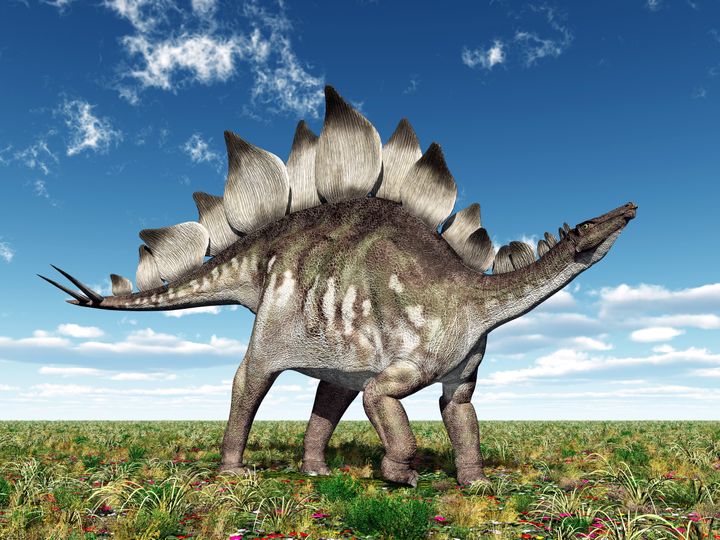Dinosaurs may have originated in an area that is now the UK, according to a groundbreaking study that could upend our understanding of their evolution.
Contrary to the 130-year-old scientific consensus, the new research suggests dinosaurs herald from the Northern rather than Southern Hemisphere.
The controversial study, which was published in Nature, indicates that dinosaurs evolved from an obscure cat-sized creature, called Saltopus, in Scotland.
The study also suggests that dinosaurs first emerged 15 million years earlier than previous research has predicted.
But the most significant finding is that the current classification of dinosaurs, which has remained untouched since 1887, is wrong.

Harry Govier Seeley, a palaeontologist at Kings College London, created the existing dinosaur family tree, which separated the creatures into two groups.
The first, called Ornithischia, had hip bones that resembled those of modern-day birds, and the second, called Saurischia, had more reptile-like hips.
Ornithischia, the bird group, were exclusively herbivores, such as the Stegosaurus and Triceratops.
The lizard-like group also included plant-eaters, such as Brontosaurus, but also featured carnivores, such as T. rex.
But the researchers claim that many bones and species discovered in the last three decades points to an entirely different structure.
In the revised tree, meat-eaters, known as therapods, have been reclassified into a new group that includes bird-hipped dinosaurs, which they are said to be more closely related to.

Matthew Baron, a graduate student at Cambridge University and the study’s lead author, said in a statement: “When we started our analysis, we puzzled as to why some ancient ornithischians appeared anatomically similar to theropods.
“Our fresh study suggested that these two groups were indeed part of the same clade. This conclusion came as quite a shock since it ran counter to everything we’d learned.”
Baron added that Diplodocus would now fall outside the traditional grouping of dinosaurs, prompting a definition change to ensure it was included.
The research also simplifies dinosaurs’ relation to birds. Co-author, Cambridge’s Dr David Norman, said the repercussions were both surprising and profound:
“The bird-hipped dinosaurs, so often considered paradoxically named because they appeared to have nothing to do with bird origins, are now firmly attached to the ancestry of living birds.”
The research also suggests that Stegosaurus and Triceratops, normally considered armoured beats, may actually have been feathered.
The study, particularly the Scottish claim, has already prompted a furious backlash from rival palaeontologists around the world.
Max Langer, a respected palaeontologist at the University of São Paulo, told the Guardian: “There’s nothing special about this guy. Saltopus is the right place in terms of evolution but you have much better fossils that would be better candidates for such a dinosaur precursor.”
In a blog for the Conversation, Michael J. Benton, a professor of palaeontology at the Bristol University, wrote: “Is this new paper the true answer for the evolutionary origins of dinosaurs? The data we have is riddled with question marks, and so the algorithms still struggle to calculate the one true tree.
“This is no criticism of the researchers, just a statement of the practicalities. We don’t know yet whether we can see the wood for the trees.”
The study’s co-author, Prof Paul Barrett, of the Natural History Museum, said: “If we’re correct, [the study] explains away many prior inconsistencies in our knowledge of dinosaur anatomy and relationships and it also highlights several new questions relating to the pace and geographical setting of dinosaur origins.”
